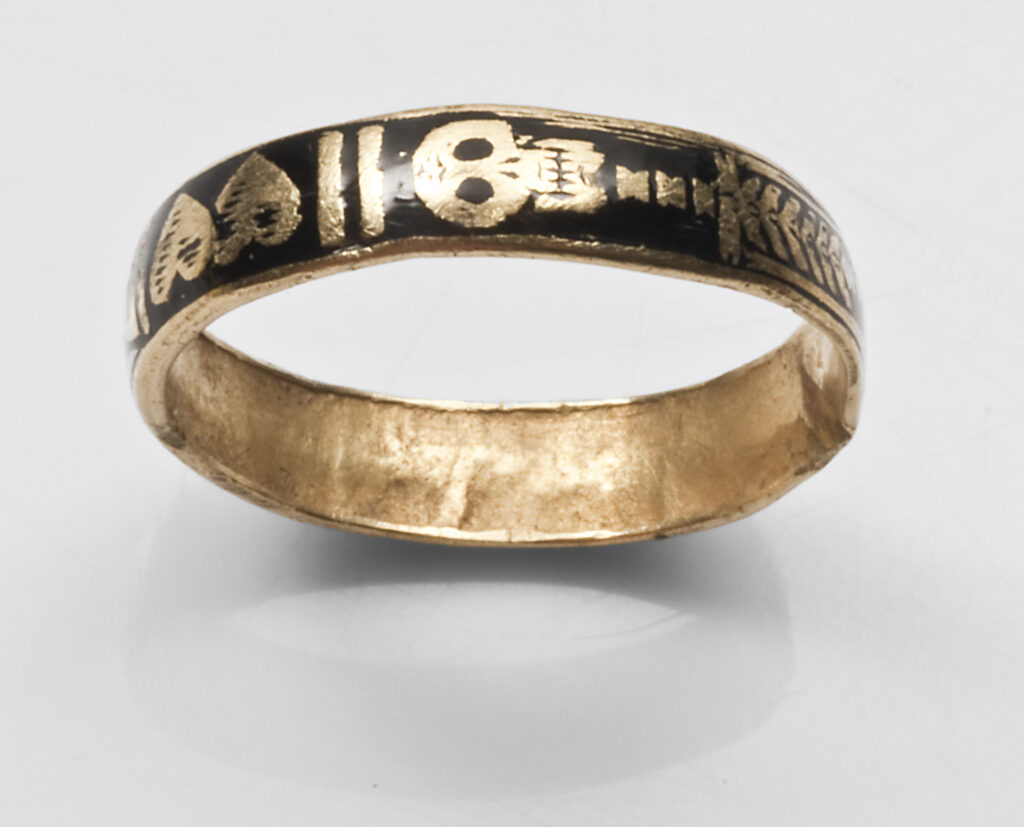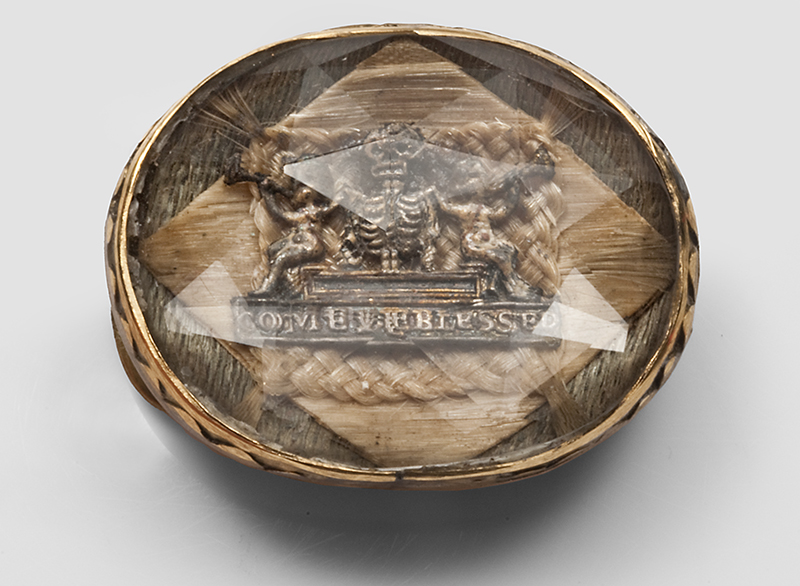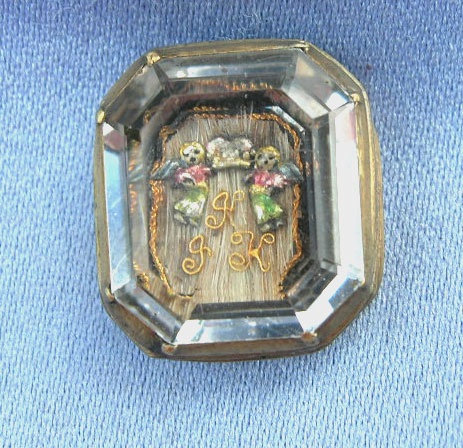A Heart Shaped Ribbon Slide, 1687
Hairwork and how it was placed inside a ribbon slide is a very important factor in the reason for a mourning and sentimental jewel, a factor that reflects the person and the time.
Hairwork, while not something that was unique to the time (wearing the hair as a keepsake for a loved one dates to ancient practice), but that there was an industry built around it is important.
Evolution of hairwork over the 18th century was rapid and on a large scale. Jewellery changed with fashion, as the two are intrinsically linked. Smaller styles of jewellery that had grown with the 17th century began to disappear and by around 1760, new, larger forms became the standard. Hairwork over this particular time was becoming more affordable and a craft which ladies could do at home (though not to the extent of the 19th century). A letter from the Duchess of Portland to Miss Catherine Collingwood, written on December 1st 1735, suggests that ladies were in the habit of working the hair, leading the goldsmiths to provide the gold setting. Pieces made to order became more and more popular in the first half of the 18th century, with lockets (especially in the popular heart motif) containing hair becoming increasingly common. As larger jewellery with glass replaced faceted crystal, simple weaves of hair could be placed underneath, without it being a speciality craft or being as expensive. By the 1760s, hair was reintroduced in mass produced memorial medallions and lockets (in England and on the Continent), as it was mixed in with sepia and painted on to ivory. Sepia / hair painting is a typical and very popular method from the 1760s to around 1810, with many pieces being a standard style (sometimes chosen from a hairworker’s catalogue) and tailored to the individual with the appropriate name and inscription. Chopped hair also was a common feature of memorial art on ivory (sometimes vellum), with scenes / symbolism assembled with hair and glue. Hair weaving was also in high demand, with everything from brooches to miniatures holding a compartment with which to place the woven hair.
Prior to the rise of the hairworking industry and its prominence in mainstream jewellery, gifts of hair was a token of affection and love between two people. Bury refers to ‘The Relique’ but poet John Donne (1571-1631) and its very early reference to a hair bracelet:
“When my grave is broke up againe
Some second ghest to entertaine,
(For graves have learn’d that woman-head
To be to more then one a Bed)
And he that digs it, spies
A bracelet of bright haire about the bone,
Will he not let’us alone,
And thinke that there a loving couple lies”
Donne speaks in metaphysical terms about the unifying nature of spiritual love, as when he and his lover are dug up, they remain the symbol for holy and eternal love. From this, the poem is an excellent perspective on the sentimentality of hairwork at the turn of the 17th century. Wearing hair being an encompassing symbol of union and love between two people.
Donne wasn’t unique in his wearing of a hair bracelet, however, as Count de Grammont viewed several people wearing hairwork bracelets in the Court of the restored Charles II(BURY), circa 1660. This ties in well with the rising prominence of other sentimental jewellery of the time. From love tokens, such as posy rings, to hair woven under crystal in slides, brooches, rings and other forms of jewellery, sentimental jewellery was rapidly evolving over the 17th century. Within these forms of sentimental jewellery, the use of hair became ever more prominent. Another example from 1647/8 of the popularity of hairwork within mainstream culture can be seen in Mary Varney’s letter to Sir Raplh Varney, asking to send locks of their daughter’s hair ‘to make bracelets… I know you could not send a more acceptable thing than every one of your sisters a bracelet. (BURY)’ At the time, Ralph was living in exile in France during the Protectorate. Hair tokens within families was the more common practice, but as jewels grew as a social device, so did their nature as a personal statement. Royalty of the time also propagated the hairwork custom, exemplified by Queen Henrietta Maria (1609-69) wearing a hair bracelet as a token of affection. Factors such as these laid the groundwork for the hairworking industry that was to come. As referenced by Bury, in 1685 mourning lockets ‘are at least £6 in the making’. This is an extravagant price for a slide or locket of the time, leading to an increased allowance for mourning jewels in wills.
This particular sentimental slide features the gold cypher initials on top of the held hands and heart, set inside a heart shape. Not only does this denote the beauty of the sentiment, but it exemplifies its time as the rise of symbolism in the heart as a token of love is the reason for the piece’s existence.








